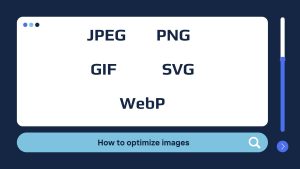Mobile website optimization isn’t just a buzzword—it’s the backbone of modern digital success. With over 60% of global web traffic originating from smartphones and tablets, a sluggish or poorly designed mobile experience can sabotage your business faster than a dropped call in a dead zone. Whether you’re a scrappy startup founder, a seasoned marketer, or a code-slinging developer, this exhaustive guide will walk you through every critical step to transform your mobile site into a speed demon, a usability champion, and an SEO powerhouse.
1. Diagnose Your Mobile Performance: The Digital Health Check
Before prescribing fixes, you need a diagnosis. Tools like Google’s Mobile-Friendly Test and PageSpeed Insights act as your digital stethoscope, revealing hidden performance gremlins.
Key Metrics to Scrutinize:
- Load Time: If your site takes longer than 3 seconds to load, 53% of visitors will vanish. Time is money, and patience is extinct.
- Responsiveness: Test on an iPhone SE, a Galaxy Fold, and everything in between. If your layout breaks like a cheap lawn chair, it’s time for repairs.
- User Experience (UX): Are buttons the size of a grain of rice? Does text require a magnifying glass? Frustration is the enemy of conversions.
Real-World Example: A boutique eCommerce client once had a checkout button buried below six scrolls of product descriptions. Relocating it to the top of the page boosted conversions by 20% overnight. Sometimes, the smallest tweaks yield the biggest wins.
2. Image and Media Optimization: The Silent Speed Killers
Unoptimized media files are the digital equivalent of dragging an anchor. Here’s how to lighten the load:
Tactics for Leaner Media:
- Compression Tools: TinyPNG and Squoosh shrink file sizes without turning your visuals into pixelated abstract art.
- Lazy Loading: Only load images as users scroll. Plugins like WP Rocket automate this effortlessly.
- Next-Gen Formats: WebP images are 30% smaller than JPEGs and supported by 95% of browsers. Stop living in 2010.
Pro Tip: Autoplay videos are the pop-up ads of 2024. Unless you’re Netflix, let users hit “play” voluntarily.
For a complete guide on proper image optimization, check out this article.
3. Responsive Design: The Art of Digital Shape-Shifting
A responsive design isn’t a luxury—it’s survival. Your site should adapt like a chameleon on a rainbow.
Core Principles:
- Fluid Grids: Ditch fixed pixels. Use percentages to let content flow like water.
- Flexible Images:
max-width: 100%ensures images scale without breaking layouts. - Media Queries: CSS magic that tailors styles to screens, from a smartwatch to a 4K monitor.
Analogy: Viewing a desktop site on mobile is like reading a newspaper through a keyhole. Don’t subject users to that torture.
4. Navigation: The GPS of Your Website
Mobile screens are cramped real estate. Navigation should be intuitive, not a treasure hunt.
UX Must-Haves:
- Hamburger Menus: Ideal for hiding secondary links, but keep key pages one tap away.
- Sticky Headers: Pin critical CTAs (e.g., “Buy Now”) to the top as users scroll.
- Breadcrumbs: A trail of digital breadcrumbs helps users backtrack without rage-quitting.
Hypothetical Nightmare: Imagine a user hunting for your contact page, only to drown in nested dropdowns. Spoiler: They’ll leave.
5. AMP: Speed at the Cost of Creativity?
Accelerated Mobile Pages (AMP) are stripped-down HTML frameworks that load faster than a caffeine-fueled coder.
Pros and Cons:
- Pros: Lightning speed, SEO brownie points, and happier users.
- Cons: Design feels like a straitjacket. Not ideal for feature-rich eCommerce sites.
Hot Take: AMP is the minimalist tiny house of web design—great for blogs, suffocating for online stores.
6. Pop-Ups: The Necessary Evil
Google penalizes intrusive pop-ups, but used wisely, they can boost conversions.
Rules of Engagement:
- Don’t Block Content: Pop-ups should be dismissible with a single tap.
- Timing is Everything: Wait until users scroll 50% of the page. First impressions matter.
Sarcasm Alert: Nothing says “I value your visit” like a pop-up assaulting users before they’ve even read a word.
7. Local SEO: The “Near Me” Goldmine
For brick-and-mortar businesses, mobile optimization is your lifeline for local searches.
Local SEO Essentials:
- Google My Business: Keep hours, location, and contact info updated. Inaccuracies repel customers.
- Schema Markup: Helps Google display your business details in rich snippets.
- Mobile Forms: Autofill and minimal fields reduce friction. Nobody wants to type a novel on a touchscreen.
Success Story: A local bakery optimized their Google My Business profile and saw a 30% surge in foot traffic. The secret? Accurate hours and a click-to-call button.
8. Browser Caching: The Speed Hack
Caching stores site data on a user’s device, slashing load times for repeat visits.
How to Leverage It:
- Expiry Headers: Tell browsers how long to cache resources (e.g., 1 month for images).
- CDNs: Cloudflare or Akamai distribute content globally, reducing latency.
Fun Fact: Caching is like muscle memory for your website—the more users visit, the faster it gets.
9. Above-the-Fold Content: First Impressions Are Forever
Users judge your site in milliseconds. Prioritize what they see first.
Critical Fixes:
- Critical CSS: Load essential styles first to prevent janky layout shifts.
- Deferred JavaScript: Let the main content render before loading non-essential scripts.
Metaphor: Your above-the-fold content is the trailer for your website. Make it blockbuster-worthy.
10. Testing: The Never-Ending Journey
Optimization isn’t a one-and-done deal. It’s a relentless pursuit of perfection.
Continuous Improvement Tactics:
- A/B Testing: Experiment with layouts, CTAs, and colors. Data beats guesswork.
- Analytics: Monitor bounce rates, session duration, and conversions. Adapt or die.
Final Thought: Mobile optimization is like brushing your teeth—skip it, and things get ugly. Stay vigilant, and your users (and search rankings) will flourish.
This guide is your roadmap, but the digital landscape evolves daily. Stay curious, keep iterating, and never settle for “good enough.” The mobile revolution waits for no one. 🚀


